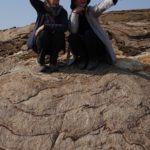35th International Geological Congress (IGC) in Cape Town, 27 Aug. – 4 Sept., 2016
IGCP 648 had a big presence at the 35th IGC, held during 27 August–4 September 2016 in Cape Town, South Africa. Co-leaders ZX Li and Bruce Eglington led a keenly participated session, T30.7a – Supercontinent Cycles and Global Geodynamics, which went for much of the day on Wednesday 31 August (for program see session http://www.35igc.org/Uploads/Conference/IGC_PROGRAMME_WEDNESDAY_2016_WEB.pdf). Speakers came from China, India, Russia, Sweden, Australia, Germany, Mexico, France, USA, Canada, and Brazil. The project’s IGCP grant support was used to co-support member speakers from India, Mexico and Egypt, and a female student member speaker from Australia. There were also numerous poster displays. Topics presented covered almost all continents and included; geotectonic and geodynamic processes related to supercontinent cycles, updates of supercontinent reconstructions, and methods and approaches applicable to supercontinent studies (for instance, using GIS databases to construct global paleogeographic animations).
Our successful session was followed by an IGCP 648 Business Meeting where Li updated members on the organisation of the Rodinia 2017 conference in Townsville and accompanying field excursion (http://geodynamics.curtin.edu.au/wp-content/uploads/sites/11/2016/07/Rodinia-2017_first-circular.pdf; second circular will become available soon). Extensive discussion then focused on the project-sponsored annual field symposia for 2018 and 2019. Three proposals have been presented: one for China by Professor Shihong Zhang, one for Egypt by Professor Zakaria Hamimi, and one for Russia by Professor Valery Vernikovsky. At the conclusion of the meeting, the three proponents were asked to each develop a more detailed proposal in the following months, which will then be placed at the project web site (http://geodynamics.curtin.edu.au/igcp-648/) for members to comment on.
A workshop on global database construction, an important scope of the project, was held in the final afternoon of the congress, where Bruce led a discussion with interested members on the structure and content of the geological database (photos). Extensive discussion and small side meetings were also held between Bruce/Li and people from other countries and continents throughout the congress. In particular, a fruitful meeting was held with delegates from the Chinese Academy of Geological Sciences led by Profs. Shuwen Dong and Tingdong Li. An in-principal agreement was reached to allow the project to use the digital 1:2.5 million Geological Map of Central Asia and Adjacent Areas as a base map for this part of the database. Li also subsequently engaged in discussions with Chinese members on the possible formation of a Chinese Working Group to focus on both the construction of the database, and the publication of a journal special issue (or a book) on new scientific outcomes generated using the newly constructed database. We intend to adapt a similar approach for some other continents.
Members attending the congress also took the opportunity to examine the cover sequence of the Neoproterozoic Cape granites and younger cover sequence at the majestic Table Mountain (photos). Many also joined the various regional field excursions, for instance, the Damara Orogen-Snowball Earth excursion to Namibia led by Dr Roy Miller’s team (photos) and a separate, pre-congress field workshop in the Barberton-Swaziland area organized by Dr Alfred Kroener (photos) which was coordinated with the “Habitable Earth” programme from Germany.
































